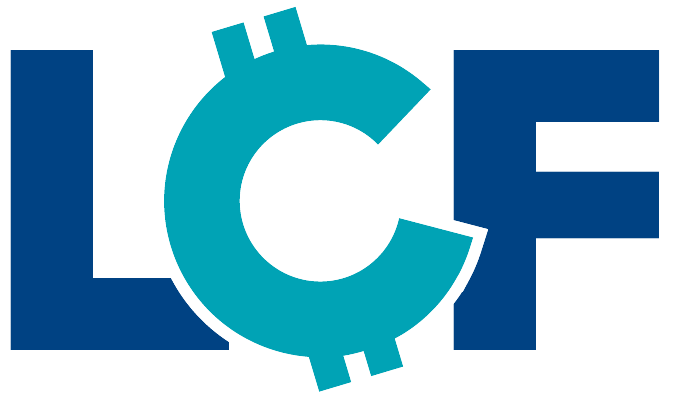Apply Now For Business Funding
Small business funding is essential to trucking and transportation companies, and there are a wide variety of options available to them. The transportation industry is critical to the US economy. It enables the movement of goods and people across the country, which is essential for economic activity. Success within the industry is extremely lucrative, but also requires more startup money than other industries and financing is often necessary to keep companies growing.
Transportation Industry Overview
The transportation industry is a significant source of employment in the US. According to the Bureau of Labor Statistics, more than 2 million people are employed as truck drivers in the US, and that number is projected to grow. The industry provides jobs for millions of workers even outside of the cab, including mechanics, office workers, and engineers, and it plays an important role in supporting economic growth and stability. That’s not even mentioning owner-operators and other small-scale trucking company employees.
The transportation industry also drives innovation and technology and plays a key role in promoting competitiveness and efficiency in the US economy. The continued growth and development of the transportation industry are therefore essential for the overall economic well-being of the US.
Uses for Commercial Truck Loans and Alternative Financing
There are many ways that transportation and trucking companies can use small business loans and other forms of funding to meet their business needs.
Fleet expansion: Business owners can use business loans to purchase additional commercial vehicles or upgrade an existing fleet, enabling it to increase capacity and meet growing demand. Transportation financing can also be used to lease vehicles.
Maintenance and repairs: The maintenance and repair of vehicles is a significant cost for trucking companies, and transportation business loans can be used to finance these expenses.
Infrastructure improvements: Business loans can be used to finance infrastructure upgrades, like the construction of new terminals, depots, or distribution centers.
Technology upgrades: The transportation industry is rapidly evolving, and companies can use business loans to invest in new technologies, like GPS tracking, telematics, and automated dispatch systems, to improve efficiency and competitiveness.
Working capital: Business loans can provide companies in any industry with the working capital they need to manage daily operations and meet unexpected expenses.
Acquisition and consolidation: Transportation companies can use business loans to finance the acquisition of other companies, or to consolidate their existing operations and reduce costs.
Refinancing: On top of buying new trucks and carrying out other transportation projects, some companies use loans to refinance existing debt. That’s particularly effective if your company took out loans when its credit was in a worse state.
Employee training and development: Business loans can also be used to fund training and development programs for new employees and long-time truckers alike to improve the skills and capabilities of the workforce.
Types of Financing for Commercial Trucking Companies
With all of the equipment, space, and staffing necessary for transportation companies, some form of business financing is nearly always needed. Luckily, the funding industry has created solutions that fit nearly any need, credit score, and project size.
Term Loans for Commercial Truck Drivers
Term loans are a type of loan that is issued by a lender and repaid over a fixed period of time with regular payments, typically on a monthly or quarterly basis. The loan amount is usually a large sum of money, and the loan term can range from several months to several years, depending on the needs of the borrower. The interest rate on a term loan is typically fixed, meaning that it does not change over the course of the loan term.
Term loans are typically used for long-term investments and expenditures, such as purchasing equipment, financing expansion or growth initiatives, or refinancing existing debt. They can provide businesses with the capital they need to grow and achieve their goals, and can be a useful source of financing for companies that do not have access to other forms of financing, such as equity investments. Additionally, term loans can offer more stability and predictability than other types of loans, as the interest rate and repayment terms are fixed. This makes it easier for businesses to budget and plan for their financial future.
Short-Term Loans
Short-term loans typically have repayment terms under 18 months. They can provide businesses with quick access to funds and greater flexibility compared to long-term loans. On top of that, they’re often easier to obtain, may not require collateral, and can be structured to meet the specific needs of the borrower. Short-term loans can also improve a business’s cash flow, and come with lower risk as the repayment period is shorter.
On the other hand, short-term loans come with higher interest rates compared to long-term loans and provide loan amounts. The shorter repayment period of short-term loans can place significant pressure on the borrower to repay the loan quickly, which can be challenging for businesses with limited resources. Finally, once the loan is taken out, the terms and conditions often cannot be changed, and there is a risk of having to renew the loan if unable to repay on time, resulting in additional interest and fees.
Long-Term Loans
Long-term loans provide businesses with a large sum of money that can often take decades to pay back. The longer repayment period allows for more manageable and predictable monthly payments, and the fixed interest rate can provide stability for budgeting and planning purposes. Additionally, long-term loans may have lower interest rates compared to short-term loans, making them more cost-effective in the long run.
Long-term loans require a longer commitment, which can limit a business’s ability to take advantage of new opportunities or respond to changes in market conditions. The longer repayment period can also be a burden for businesses with limited cash flow, and if circumstances change, the terms and conditions of the loan may not be flexible enough to accommodate them. The requirement for collateral, and the longer repayment period, make long-term loans a more significant risk for the lender, which can make it harder for some businesses to qualify for the loan.
SBA Loans
Small Business Administration (SBA) loans are a type of loan offered by the Small Business Administration, an independent government agency that provides support to small businesses in the United States. SBA loans are designed to help small businesses access capital they may not otherwise be able to obtain through traditional lending channels.
The SBA does not provide loans directly, but instead provides guarantees to lenders who are willing to make loans to small businesses. The guarantee reduces the risk to the lender and makes it easier for small businesses to obtain financing. SBA loans can be used for a variety of purposes, including starting a business, expanding an existing business, purchasing inventory, equipment, or real estate, or refinancing debt.
SBA loans typically come with more favorable terms and conditions compared to traditional loans, such as lower interest rates, longer repayment terms, and a more flexible underwriting process. However, the application process for an SBA loan can be more complex and time-consuming compared to traditional loans.
Overall, SBA loans can be a good option for small businesses that are seeking financing and may not be able to obtain it through traditional lending channels. The SBA’s guarantee helps reduce the risk to the lender, making it easier for small businesses to access capital and grow their businesses.
Equipment Financing
Equipment loans are a type of loan specifically designed for businesses to purchase equipment, machinery, or vehicles. The equipment being purchased serves as collateral for the loan, and the lender uses the equipment’s value as a means to secure the loan.
The benefit for trucking companies is obvious: equipment loans can function as big rig loans, allowing for the purchase, renting, or repairing of equipment. You can add new vehicles to the fleet since the vehicles themselves will be held as collateral.
Business Lines of Credit
In a traditional term loan, the borrower receives the loan amount upfront and begins making regular monthly payments to repay the loan. In a business line of credit, however, the lender will offer the borrower a credit limit, and payments are made only on money drawn on that credit limit. The borrower is able to borrow as much or as little as needed, whenever it’s needed. For that reason, lines of credit are often recommended as a last line of defense against emergency expenses and a ready-made source of funding when an opportunity arises.
You don’t know what’s going to happen in the transportation industry. Gas prices could jump 40%. A truck might get caught in a hail storm and need a new windshield. You might need to completely revamp the logistics side of the business. A long-time competitor might be for sale.
Making sure your company always has a line of credit ready to go means that if an emergency or opportunity springs up, you can act immediately instead of waiting for weeks for a bank to decide if you’re eligible.
Alternative Financing: Invoice Factoring and Merchant Cash Advances
Invoice Factoring
Invoice factoring is a transaction where a company in need of funds sells outstanding invoices to a factoring company. The company receives a lump sum that is close to the value of the invoices and the factoring company is responsible for collecting payment.
Invoice factoring usually involves receiving about 95% of the value of your receivables. If you have $15,000 in outstanding invoices, for example, you might receive $14,250. The factoring company would then collect the full amount, netting them $750.
One positive for invoice factoring is that it’s a single transaction, not a long-term loan. Once the factoring company has bought the receivables, they collect in full. There aren’t additional payments.
That means companies with poor credit are often eligible. Your credit history doesn’t particularly matter to factoring companies. Instead, they can simply look over your accounts receivable to decide how much financing you can receive.
There’s one big risk with factoring: you’re letting a separate company handle the most important part of your business. While most factoring companies are professional and courteous, you don’t have control over their business practices. If you’ve got great relationships with your customers, you might want to consider if you should bring in a new party.
Merchant Cash Advances
A merchant cash advance (MCA) is a type of financing option for small businesses. It is a lump sum payment made to the business in exchange for a portion of future credit card sales. The business often buys back the advance through automatic deductions from their credit card sales until the full amount has been repaid, with the repayment amount based on a pre-agreed percentage of sales (typically around 10%).
MCAs are often used by businesses in need of quick funding and are known for their flexible payment terms and quick approval process. However, they can also come with higher fees and interest rates compared to traditional loan options. It’s a give and take: the simplicity and speed in exchange for being a bit more expensive.
You won’t pay interest on an MCA. Instead, cash advance providers make money using what’s called a factor rate. Factor rates and interest rates are both methods used to calculate the cost of borrowing money, but they differ in how they are expressed and how they affect the total cost of the loan.
An interest rate is expressed as a percentage of the loan amount and is the cost of borrowing money over a set period of time, such as a year. For example, if you take out a loan for $100,000 with an interest rate of 5%, you would pay $5,000 in interest over the course of a year.
A factor rate, on the other hand, is a decimal that is multiplied by the loan amount to determine the total cost of the loan. For example, if you take out an MCA for $100,000 with a factor rate of 1.25, the total cost would be $125,000 ($100,000 x 1.25).
In general factor rates are a straightforward way to determine the total cost of a loan. However, factor rates can sometimes result in higher costs than interest rates.
Is there Guaranteed Semi Truck Financing?
Unfortunately, nothing in the world of business financing is guaranteed. But there are steps you can take to give yourself and your company the best possible chance of approval. Ensure you meet every eligibility requirement. Make sure you’re asking for the right amount for the right purpose. And seek financing when your credit is at its peak.
Filling out the right loan application for the right financing can put your company in a position to finance everything it needs, from the trucks to the computers to the team.
Latest Blog & Articles
Financial Tips for the Trucking and Transportation Industry
The trucking and transportation industry is the backbone of commerce, ensuring goods are moved efficiently across regions. For small...
A How-To Guide for Funding Your Trucking Business
Starting a trucking business can be a lucrative venture, but it requires significant capital investment upfront. Whether you're an...
Types of Financing for Truckers: A Comprehensive 2024 Guide
Is there a difference between a SBA loan and a small business loan? How do commercial truck loans work?...





